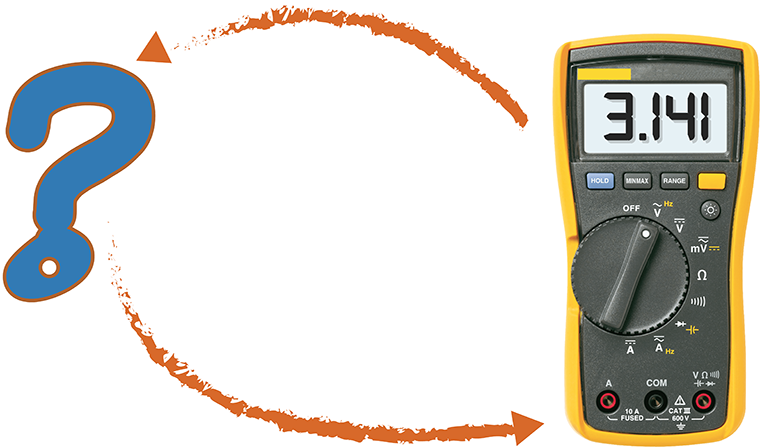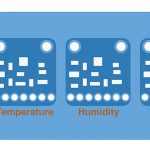A couple of weeks ago, I asked my subscribers for their favorite test equipment alternatives. The reason I asked, was because I recently picked up a Mooshimeter. It is a modern take on the multimeter. However, I will cover that in more detail soon.
While I am fortunate that my bench has the usual equipment like an adjustable power supply, oscilloscope, multimeter, and function generator, I know that not everyone else does. I also had to think back to before I had this equipment, what did I use to troubleshoot my circuits.
Sometimes when working on a project, whether hobby or professional, you just don’t have the tools you need on hand. Or worse, you cannot afford it. So here are some of the responses you all sent me.
First, I’d like to thank everyone who tweeted, posted a comment, and emailed me.
All-In-One Test Equipment Alternatives
In the past, I reviewed the VirtualBench from National Instruments. Great set of equipment, as long as you are starting from scratch. Mike W reminded me that NI also has the MyRIO. This small box also makes for a simple test and measurement solution. NI is, in my opinion, a test equipment company. So doesn’t (entirely) fit as an alternative.
Multimeter Alternatives (or not)
Well, this one is simple. There isn’t one. You need to have a multimeter. However, Michael T and Anand D suggested a compliment to your Multimeter: an ESR meter. Long story short, the capacitor charging itself confuses the resistance measurement of a multimeter. When measuring the ESR of a capacitor, you need an AC signal. So a dedicated ESR meter is handy.
A couple of you suggested buying really (really) inexpensive multimeters. This is not something I recommend. While I understand if your budget only allows $10, a $10 multimeter is better than none. If you are measuring DC circuits, these poorly constructed meters are probably fine. However, do NOT attach a “cheapo” multimeter to anything with Mains AC. Either save your money or buy a used one.
MOOSHIMETER
The one option that came up and is why I originally wanted to write this article is the Mooshimeter from Mooshim Engineering. It is a smartphone-accessible multimeter that can measure both voltage and current at the same time! More on this one in a future post.
Just having a DMM on your bench isn’t enough. Here are some other test equipment alternatives.
Oscilloscope Alternatives
My favorite piece of bench test equipment is an oscilloscope or scope. It is the measurement device that I use the most, and no alternative is a viable replacement, at least, to me.
You can, however, get software which can use USB “soundcards” (Is it still called a card if it connects by USB and not PCI?) This provides a low bandwidth oscilloscope and function generator. For circuits above 20kHz, this is going to be pretty limiting.
Hiroshi-san reminded me that there are oscilloscope projects based on the Raspberry Pi and Arduino. The Uno’s built-in ADC is somewhat limiting, but there are plenty of SPI-based ADCs out there that might make for a last minute alternative.
Logic Analyzer
In the past, I have looked at the low-cost Saleae 4bit (and 8bit) logic analyzers. These are perfect for Arduino and Raspberry Pi GPIO-based projects.
If you have an FPGA board like the FleaFPGA available, you could also turn that into a makeshift analyzer. The CPLD and FPGA suggestion came to me by Vilmos V.
LOGIC PROBE
Many people pointed out that you could buy or build a simple Logic Probe. This can be incredibly helpful in quickly debugging what a pin or signal is doing.
Microcontroller debugging
Allen and Vilmos both sent me some stories about how they used a serial port to debug a microcontroller. If you have done any Arduino programming, you are familiar with this concept! It can be helpful to have a standard USB to FTDI board on-hand like Adafruit’s FTDI Friend. (This is a great option for when you need to use a “Software Serial Port.”)
Bench Power Supply
Andy of Workshopshed was the ONLY person to mention using an ATX Power Supply for a bench supply! (I’m surprised because this usually comes up first when talking about test equipment alternatives.) Check out the post on workshopshed.com which talks about an ATX Kit you can get from Seeedstudio.
Mike of Engineerdog.com sent me a link to a Simple Adjustable Voltage Power Supply, which you can build yourself. This great option combines a small buck converter and a 3d Printed case.
Visual Options
A couple of people, even back to back, commented on using a digital camera to debug an IR LED. The obvious IR LED being in a remote control, but there are certainly other IR uses, like position switches and optocouplers.
Non-Electrical Stuff
Michael suggested having some cold-spray on-hand. When you need to test if a problem is heat related, blast it with some spray. On the other hand, you can use your soldering iron to turn up the temp a bit.
Sometimes the details are hard to see. Whether it is checking the number printed on a part, looking for shorts, or when you drop that blasted resistor, a Flashlight, and Magnifying Lens will come in handy. Personally, I am a huge fan of my Black Diamond headlamp for this exact reason.
Conclusion
Again I want to thank everyone who has contributed ideas for test equipment alternatives. Please, feel free to leave comments here for ideas not covered. Let’s keep the discussion going in the comments.





3 Comments
I often just use an LED with resistor in place of a logic analyser and still have a continuity buzzer from my early days before I could afford a multi-meter.
At work, my favorite tool is an IR camera for seeing thermal issues; especially when initially powering up prototypes. Very tempted to spring for a FLIR ONE for my bench at home. Nothing like having that 6th sense.
I love using an LED lit Eye Loupe to inspect small soldering jobs, part markings, etc. They look like this; http://www.winddeal.net/image/30164.jpg Got one as swag from a company and hate to be without it, so on my bench it stays.